The document reviews the implementation of lean operations across various industries, detailing case studies from Celestica and a Sri Lankan manufacturing organization. It highlights the importance of waste reduction and the application of lean tools such as Six Sigma, Kanban, and Value Stream Mapping to improve efficiency and productivity. Key lessons emphasize that total implementation of lean principles is crucial for achieving significant improvements in operational performance.
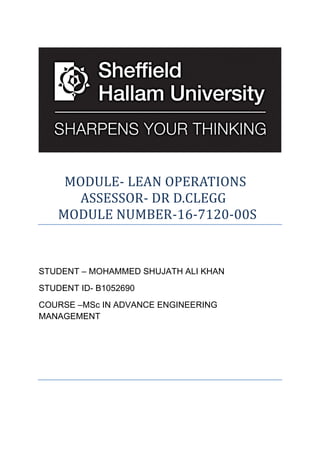


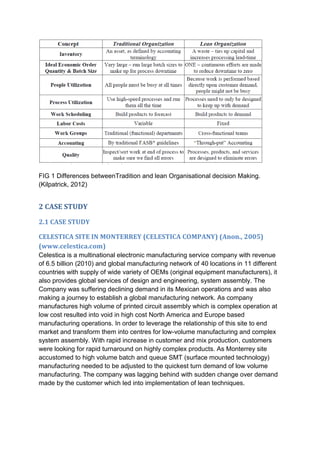





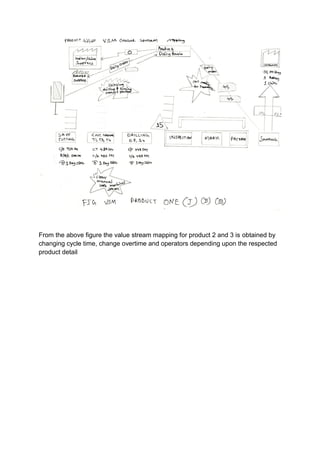





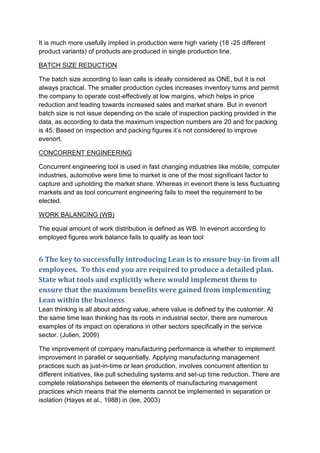



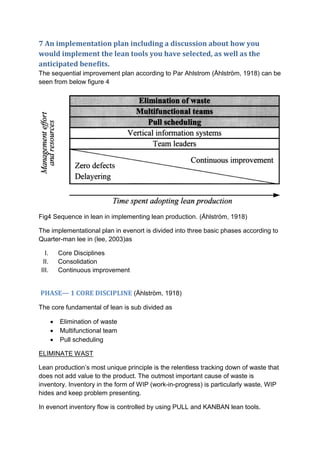


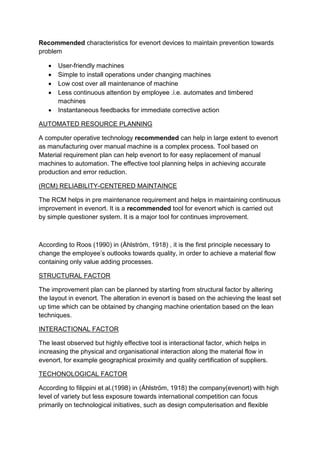

![Reference
Åhlström, P., 1918. European Management Journal. Sequences in the
implementation of lean production, 13(3).
Anon., 2005. Lean Manufacturing-A Case Study. Lean Manufacturing-A Case Study,
19(5), p. 9.
Brunt, D. T. a. D., 2002. MANUFACTURING OPERATIONS AND SUPPLY CHAIN
MANAGEMENT. first ed. UNITED KINGDOM: thomson.
Cudney, E., 2010. IMPEMENTING LEAN PRINCIPLE. IMPLEMENTING LEAN
MANUFACTURING, 144(3), p. 83.
H.M. Wee, S. W., 2009. Supply Chain Management: An International Journal. Lean
supply chain and its effect on product cost and quality: a case study on Ford Motor,
14(5), pp. 335-341.
Howell, V. W., 2012. Lean Manufacturing. Lean Manufacturing, 160(9), p. 16.
james A. Jordan, J. f. J., 2001. The lean compnay making the right choice. first ed.
USA: SME (society of maufacturing engineers).
Julien, D. M., 2009. Lean thinking implementation at a safari park. Lean thinking
implementation at a safari park, 15(3), p. 16.
Kilpatrick, J., 2012. www.mhc-net.com. [Online]
Available at: http://mhc-net.com/whitepapers_presentations/LeanPrinciples.pdf
[Accessed 15 11 2012].
lee, Q., 2003. Sequence in the implimentation of lean production. [Online]
Available at:
http://www.practicalprocessimprovementct.com/lean/Implement%20Lean.pdf
[Accessed 28 12 2012].
Lee, Q., 2007. Implementing lean manufacturing. Implementing lean manufacturing
limitations to innovation, 51(3), p. 14.
Media, B., 2012. 5S. 5S, 55(3).
nicholas, J., 2011. LEAN PRODUCTION FOR COMPETITIVE ADVANTAGE. 1 ed.
USA: TAYLOR and francis group.
Perera, H. S. C., 2011. A Case Study of a Sri Lankan Manufacturing Organization.
Lean Manufacturing: A Case Study of a Sri Lankan Manufacturing Organization,
18(1), p. 149.
Poling, M. A. N. A. S. R., 2008. Mappiing the total value stream. USA: CRC printing.](https://image.slidesharecdn.com/leanassisment-191208082626/85/Lean-assisment-LEAN-OPERATIONS-25-320.jpg)
![Radojko, 2021. The Effects of Application of Lean Concept in Retail. The Effects of
Application of Lean Concept in Retail, 15(1), pp. 88-98.
Sicilia, J., 2008. www.au.af.mil. [Online]
Available at:
http://www.au.af.mil/au/awc/awcgate/dod/cpi_leansixsigma_hdbk2008.pdf
[Accessed 28 12 2012].
sonic, J. n. a. a., 2006. The portal to lean production. USA: Auerbach publication.](https://image.slidesharecdn.com/leanassisment-191208082626/85/Lean-assisment-LEAN-OPERATIONS-26-320.jpg)